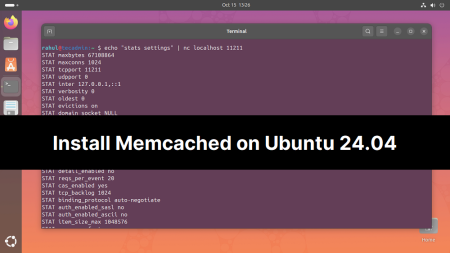Are you planning to deploy a PHP application with the Apache webserver? This tutorial will help you with installing Apache web server and PHP on your CentOS, Redhat, and Fedora systems.
Recommended Article:
Step 1 – Prerequsities
First of all, you need to add some required rpm repositories on your system. Use one of the below commands as per your operating systems.
On CentOS/RHEL 7
rpm -Uvh https://dl.fedoraproject.org/pub/epel/epel-release-latest-7.noarch.rpm rpm -Uvh http://rpms.famillecollet.com/enterprise/remi-release-7.rpm
On CentOS/RHEL 6
rpm -Uvh https://dl.fedoraproject.org/pub/epel/epel-release-latest-6.noarch.rpm rpm -Uvh http://rpms.famillecollet.com/enterprise/remi-release-6.rpm
On Fedora 31
sudo dnf install http://download1.rpmfusion.org/free/fedora/rpmfusion-free-release-stable.noarch.rpm sudo dnf install http://download1.rpmfusion.org/nonfree/fedora/rpmfusion-nonfree-release-stable.noarch.rpm sudo dnf install http://rpms.famillecollet.com/fedora/remi-release-31.rpm
On Fedora 30
sudo dnf install http://download1.rpmfusion.org/free/fedora/rpmfusion-free-release-stable.noarch.rpm sudo dnf install http://download1.rpmfusion.org/nonfree/fedora/rpmfusion-nonfree-release-stable.noarch.rpm sudo dnf install http://rpms.famillecollet.com/fedora/remi-release-30.rpm
On Fedora 29
sudo dnf install http://download1.rpmfusion.org/free/fedora/rpmfusion-free-release-stable.noarch.rpm sudo dnf install http://download1.rpmfusion.org/nonfree/fedora/rpmfusion-nonfree-release-stable.noarch.rpm sudo dnf install http://rpms.famillecollet.com/fedora/remi-release-29.rpm
Step 2 – Install Apache/PHP
After enabling the required yum repositories on your system. Now install the Apache and PHP packages on your system. This will install the latest available packages on your system.
For CentOS and RHEL 7/6
sudo yum --enablerepo=remi,remi-php71 install httpd php php-common
For Fedora 31/30/29/28/27/26
sudo dnf --enablerepo=remi install httpd php php-common
Step 3 – Install PHP Modules
You also required installing PHP modules required for your application. The below command will install some frequently used PHP modules on your system. You may install any other modules with the same command.
For CentOS and RHEL 7/6
sudo yum --enablerepo=remi,remi-php71 install php-cli php-pear php-pdo php-mysqlnd php-gd php-mbstring php-mcrypt php-xml
For Fedora 31/30/29/28/27/26
sudo dnf --enablerepo=remi install php-cli php-pear php-pdo php-mysqlnd php-gd php-mbstring php-mcrypt php-xml
Step 4 – Manage Apache Service
At this point, your system has installed the Apache web server, PHP, and modules. Now start the Apache server and also enable them to autostart on system boot.
For CentOS/RHEL 7 and Fedora
sudo systemctl start httpd.service sudo systemctl enable httpd.service
For CentOS/RHEL 6
service httpd start chkconfig --levels 235 httpd on
As a result of this tutorial, you have successfully configured a web hosting environment on your Red Hat-based system.
Recommended Article:



13 Comments
Had to run for latest CentOS
firewall-cmd –add-service=http –permanent
to open up the firewall otherwise Apache did not respond
Followed the steps on RHEL 7 and everything worked perfectly. Thanks!
Thanx.
Thanks, you saved my sanity!
gr8 article.
Very useful wiki. Just follow the steps blindly in F19. It works awesome.
login as: root
[email protected]‘s password:
Last login: Sat Dec 14 09:22:39 2013 from 124.123.0.103
[root@server ~]# /usr/bin/mysql_secure_installation
NOTE: RUNNING ALL PARTS OF THIS SCRIPT IS RECOMMENDED FOR ALL MySQL
SERVERS IN PRODUCTION USE! PLEASE READ EACH STEP CAREFULLY!
In order to log into MySQL to secure it, we’ll need the current
password for the root user. If you’ve just installed MySQL, and
you haven’t set the root password yet, the password will be blank,
so you should just press enter here.
Enter current password for root (enter for none):
ERROR 2002 (HY000): Can’t connect to local MySQL server through socket ‘/var/lib/mysql/mysql.sock’ (2)
Enter current password for root (enter for none):
ERROR 2002 (HY000): Can’t connect to local MySQL server through socket ‘/var/lib/mysql/mysql.sock’ (2)
Enter current password for root (enter for none):
the above problem i am getting i entered correct root password getting this reinstalled centos again getting this message
Hi Raju,
Is this a fresh install of MySQL ?
you are correct the vps package already did 3 steps can you install web min for my server i will give you root password above ip is you need to install
also i tried setup a website on vps with commands
but not luck can you please make a post to setup a website in means WordPress for a newbie
also include upload database process import export from MySQL commands
Before executing mysql_secure_installation one must start the service with:
#service mysqld start
Very well written article…. I like article’s written with clear steps…. thank you so much
Great article …. Thanks